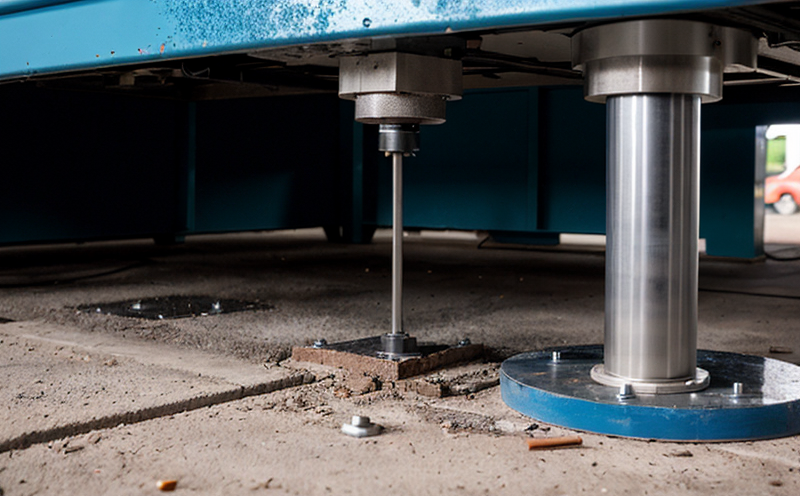ISO 52921 Residual Stress Evaluation of AM Components
The International Organization for Standardization (ISO) has established ISO 52921 as a benchmark for evaluating residual stress in components produced using Additive Manufacturing (AM). This standard is crucial because it ensures the quality and reliability of parts that undergo complex manufacturing processes, particularly in sectors such as aerospace, automotive, and medical devices. Residual stresses can significantly impact the performance and longevity of AM components, making their accurate evaluation a priority.
Residual stress refers to internal strains present within a material after processing or fabrication. In AM, these stresses arise from factors like laser power density, scan speed, layer thickness, and material composition. Understanding and controlling residual stress is vital for maintaining the structural integrity of parts used in critical applications. ISO 52921 provides methodologies that allow for precise measurement of these stresses using advanced non-destructive testing techniques.
The standard covers various aspects including the selection of test specimens, preparation methods, choice of measuring instruments such as X-ray diffraction (XRD), neutron diffraction (ND), and photoelasticity. Each method has its unique advantages depending on the material type and component geometry. XRD is widely used for its high resolution, while ND offers deeper penetration depths suitable for larger components.
Once the measurements are taken, they must be interpreted carefully to derive meaningful insights about the residual stress distribution within the part. This interpretation often involves sophisticated finite element analyses (FEAs) that model how different regions of the component experience varying levels of stress. Accurate modeling helps predict potential failure modes and optimize design parameters.
Compliance with ISO 52921 not only enhances product quality but also supports regulatory requirements set by organizations like the FAA, EASA, or FDA for airworthiness, air traffic safety, and medical device approval respectively. By ensuring consistent adherence to this standard across manufacturers worldwide, these standards promote a safer industry environment.
Nonetheless, implementing ISO 52921 involves several challenges including obtaining high-quality data from diverse materials under varied processing conditions. Advanced training and specialized equipment are necessary for technicians performing the tests according to specified procedures outlined in the standard. Additionally, there may be variations between labs due to differences in measurement techniques which underscore the importance of inter-laboratory comparisons.
| Industry Sector | Application |
|---|---|
| Aerospace | Evaluating turbine blades, engine casings, and structural components for airworthiness. |
| Automotive | Assuring quality in exhaust systems, powertrain components, and safety-critical assemblies. |
| Medical Devices | Ensuring biocompatibility and performance of implants like hip replacements or dental crowns. |
| Defense | Verifying structural integrity in firearms, ammunition casings, and protective gear. |
Why It Matters
Evaluating residual stress is essential for several reasons. Firstly, it prevents early failures of AM components due to inherent tensile or compressive stresses that could lead to cracking or warping during operation. Secondly, understanding these stresses allows manufacturers to optimize their processes, thereby reducing production costs and improving efficiency. Thirdly, compliance with international standards like ISO 52921 ensures consistent quality across different producers worldwide.
Accurate evaluation of residual stress also facilitates better integration of AM parts into existing systems where they might interact mechanically or thermally with other components. For instance, in aerospace applications, knowing the exact amount and distribution of residual stresses helps engineers design more robust structures capable of withstanding extreme environmental conditions. Similarly, in automotive manufacturing, it enables precise alignment between newly printed subassemblies and pre-existing assemblies to avoid misfit issues.
Furthermore, this evaluation supports continuous improvement efforts within organizations by providing valuable feedback loops regarding process parameters affecting residual stress formation. Such insights enable iterative refinement leading towards more optimized designs that balance cost-effectiveness with optimal performance characteristics.
Benefits
- Enhanced reliability and durability of AM components used in critical industries.
- Precise control over manufacturing processes to minimize defect rates.
- Increased efficiency through optimized design iterations based on accurate stress data.
- Better integration of AM parts into existing systems due to precise stress information.
- Compliance with international regulatory requirements ensuring airworthiness, safety standards, and medical device approvals.
- Cost savings achieved by reducing material waste through optimized process settings.
- Faster time-to-market for new products as result of reduced R&D cycles informed by accurate stress evaluations.





